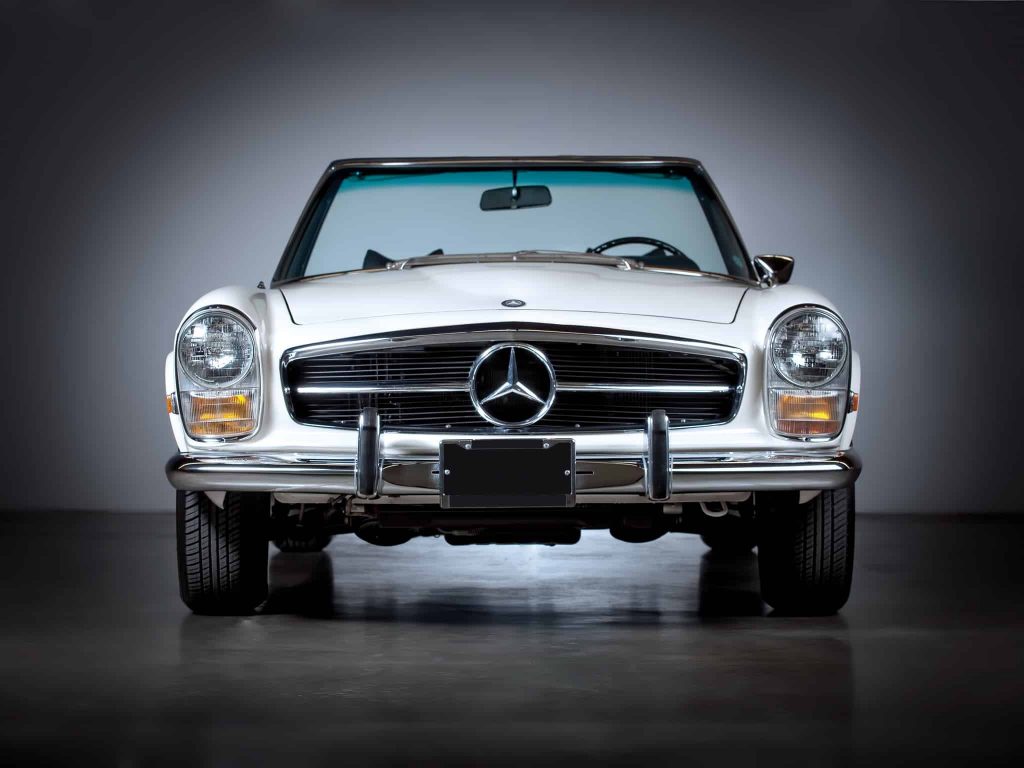In 1963 through to 1971, Mercedes-Benz was developing the Mercedes-Benz W 113 SL.
This two-seat roadster/coupe replaced both legendary 300 SL and 190 SL.
Developed under the auspices of Mercedes-Benz technical director Fritz Nallinger, Chief Engineer Rudolf Uhlenhaut, and Head of Styling Fredrich Geiger.
Bela Bareyni and Paul Bracq were the lead designers who created its distinctive, patented, slightly concave hardtop, which is where the Pagoda nickname derived from.
Every model of the Mercedes-Benz W 113 SL was equipped with an inline-six cylinder engine with multi-port fuel injection.
The bonnet, trunk lid, door skins and tonneau cover were made of aluminium to reduce weight.
The comparatively short and wide chassis, combined with an excellent suspension, powerful brakes and radial tires gave the W 113 superb handling for its time.
In 1955, Mercedes-Benz Technical Director, Fritz Nallinger, and his team knew something had to be done to supplement the 190 SL’s lack of performance, while the legendary 300 SL’s supercar was for the affluent drivers.
The division called for something in between, it encouraged Mercedes-Benz to start evolving the 190 SL on a new platform.
The production of the W 127 started emerging, however technical difficulties began to arise.
In 1960 Nallinger eventually proposed to develop a completely new 220 SL design, based on the fintail W 111 sedan platform.
This then led to the glorious W 113 SL, with improved fuel-injection 2.3 litre M127 inline-six engine and the distinctive pagoda hard top roof.
It was a legacy for the first sports car with a safety body based on Bela Barenyis extensive work and design on the vehicle.










